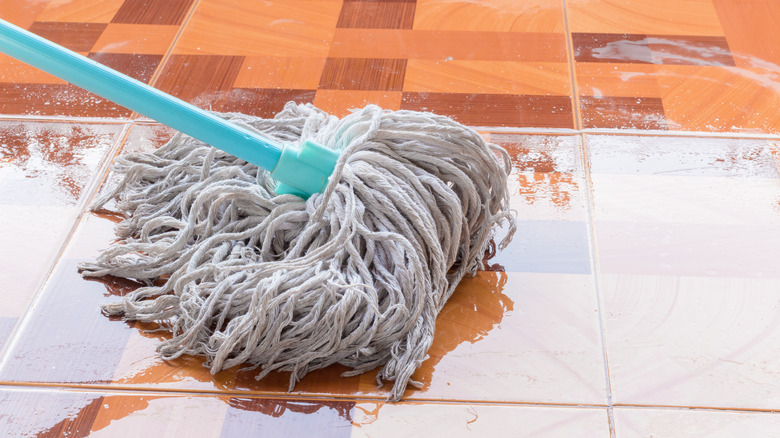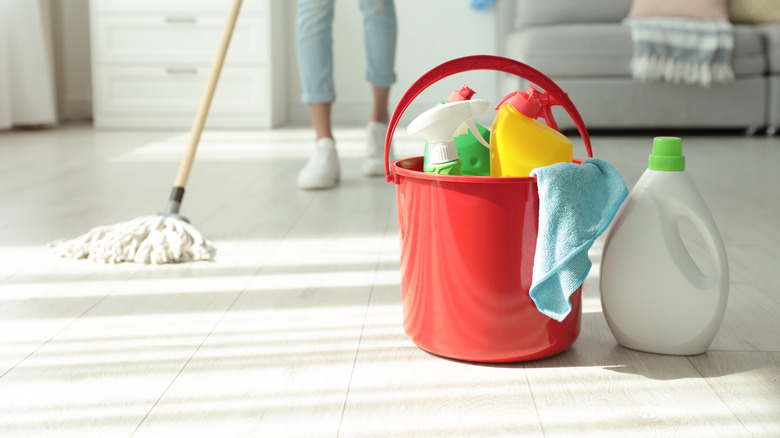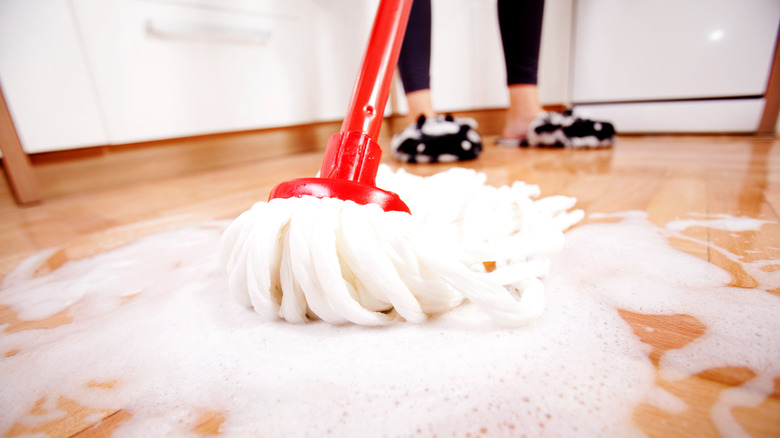Why Your Floors Still Look So Dirty After Mopping
Are you tired of wasting valuable time and energy on mopping, only to be disappointed with lackluster results? You're not alone in facing this frustrating dilemma. Many individuals encounter the same issue when it comes to achieving impeccable floors. Several factors could shed light on why your efforts aren't yielding the desired outcome, including using certain cleaning products that leave behind residue, overusing cleaning products, and employing less-than-stellar mopping techniques and practices.
Different types of flooring — such as hardwood, tile, or vinyl – all possess unique characteristics that require specific cleaning approaches. A one-size-fits-all method may fall short of delivering the right level of cleanliness. Taking into consideration the type of flooring you have in your home is essential in determining how effective your mopping will be: For example, excessive moisture can harm delicate hardwood surfaces while grout lines on tiled floors often trap persistent stains and dirt particles.
Hidden culprits
One reason for persistently dirty floors could be the cleaning products you're using. Some cleaners may leave a residue that attracts dirt and makes your floors look grimy. Try opting for a residue-free cleaner that won't leave a sticky film behind. Additionally, some commercial cleaners contain harsh chemicals that can spoil the look of your floors. This can diminish the shine of your surfaces which causes a dirty appearance. To combat this issue, use a mild cleaning solution. These are safer for various flooring types, from hardwood to tiles.
Another common mistake is overusing cleaning solutions. More isn't always better, and excessive soap or detergent can create a buildup on your floors. This buildup can be difficult to remove and can make your floors appear dull and lifeless. It's important to follow the manufacturer's guidelines on the recommended dilution ratios for your chosen cleaning product. Using the right amount will not only save you money but will also ensure a cleaner and more polished finish after mopping.
Proper techniques and maintenance
Your mopping technique plays a crucial role in the cleanliness of your floors. Make sure you're using a clean mop head, as a dirty one will only spread dirt around. Start from the farthest corner of the room using a figure-of-eight pattern, and work your way toward the exit to avoid walking on freshly cleaned areas. Also, ensure that you're using the right amount of water — overly wet mops can damage some flooring types, such as hardwood, laminate, or engineered wood. Excess moisture can cause swelling and warping. To avoid this, wring out your mop well, so it's damp but not dripping.
Regular maintenance, like sweeping or vacuuming, can prevent abrasive particles from accumulating on the surface and help maintain a clean, polished look. Ensure that your mop is free from debris and thoroughly rinsed before each use. After mopping with your chosen cleaning product, you need to go over the floor again with a well-rinsed mop, to remove any residue left behind. By adhering to this method, you'll achieve a consistent, streak-free finish.


